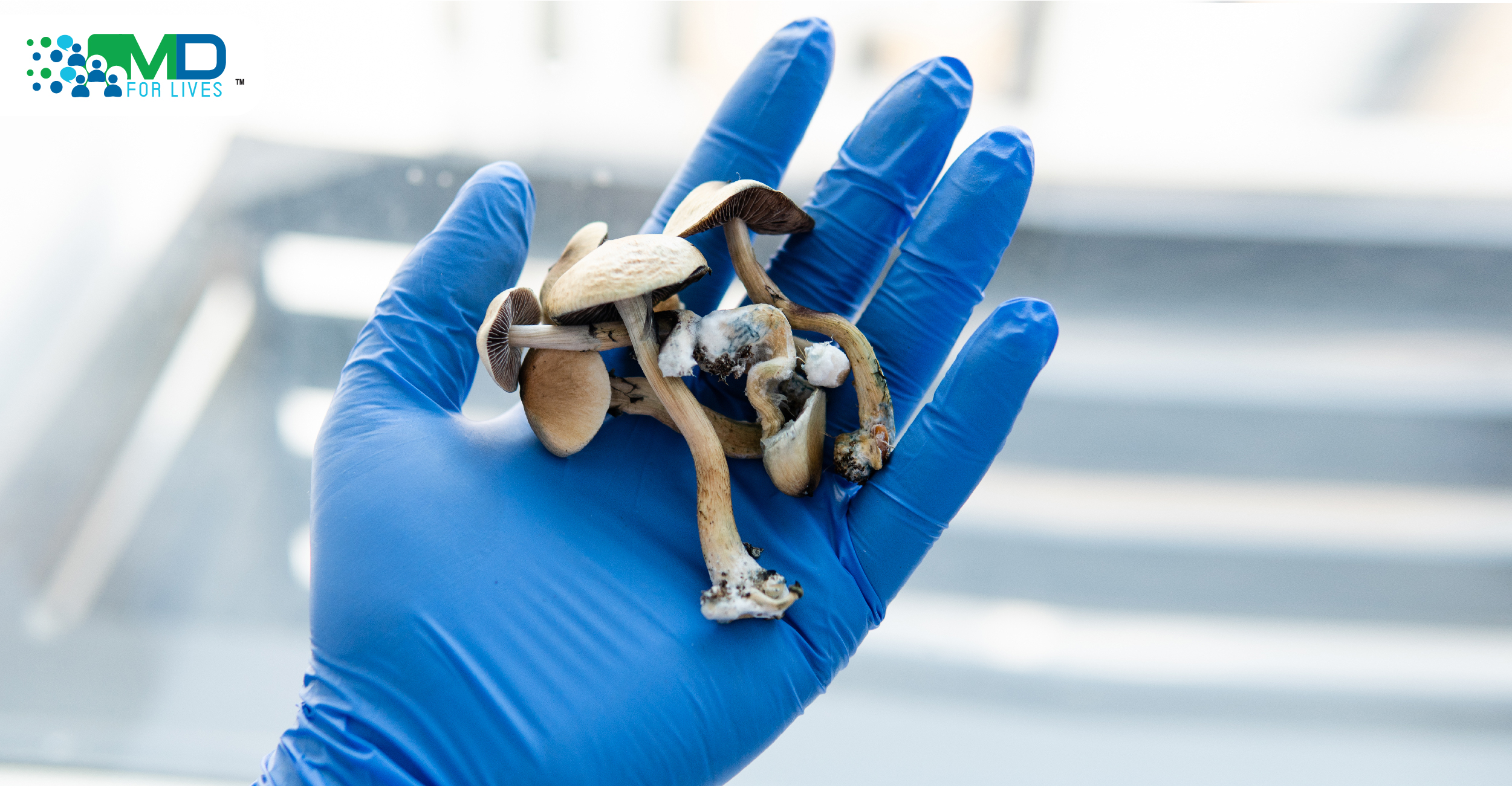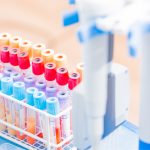Best known for its ability to induce hallucinations, the mushroom-derived compound psilocybin has also been researched for the treatment of anxiety, depression, migraine, and other illnesses. The drug has recently come back into the spotlight, with the state of Oregon set to legalize psilocybin therapy under certain conditions, and several clinical trials recently completed or in progress.

New trial compares psilocybin treatment to a standard depression drug
On April 15, 2021, a research group published the results of a trial of psilocybin for depression in the New England Journal of Medicine.1 Patients with moderate or severe major depressive disorder were randomized to receive either psilocybin (n=30) or escitalopram (n=29), an established first-line treatment for depression.
All the patients had been diagnosed with depression and began the trial with a score of 17 or more on the 52-point Hamilton Depression Scale (HAM-D-17), with higher scores indicating more depression symptoms. The study was conducted in the UK.
Patients in the psilocybin group took 25 mg of psilocybin on two occasions, 3 weeks apart, plus placebo every day for six weeks. To facilitate blinding of the experiment, patients in the placebo group were given 1 mg of psilocybin on two occasions 3 weeks apart, plus oral escitalopram daily for 6 weeks. All patients also participated in psychological support sessions and were supervised during the psilocybin dosing.1
At six weeks, mean scores on the 27-point Quick Inventory of Depressive Symptomatology-Self Report (QIDS-SR-16) had improved by 6 points in the escitalopram group and by 8 points in the psilocybin therapy group. There was no statistically significant difference between the groups by this measure, which was the primary outcome.1 Secondary outcomes, including changes from baseline on HAM-D-17 and other psychological scales, mostly favored psilocybin, but differences were not statistically significant.1
These results suggest that psilocybin treatment may be as successful or more successful at improving depression symptoms compared with escitalopram, although the trial was too small to draw firm conclusions.
Other limitations of the study include lack of correction for multiple comparisons that escitalopram dosing for only 6 weeks may not reflect the full therapeutic effect of this drug, and that most of the patients were self-referred to the trial and therefore may have been influenced by favorable views toward psilocybin.1
Other studies
A research team based at Johns Hopkins conducted a placebo-controlled, crossover trial of psilocybin for depression and anxiety symptoms in fifty-one people with cancer in 2016. Patients, experimenters, and community observers reported that participants showed clinically significant decreases in anxiety and depression symptoms, which were sustained for 6 months after psilocybin dosing.2
The Johns Hopkins team reported results from another psilocybin therapy trial, this one in 24 patients with major depressive disorder, in November 2020.3 In this study, 71% of patients had a clinically significant improvement, and 51% were considered to be in remission from depression at week 4 after a psilocybin treatment. There was no placebo group, but patients were randomized to either immediate treatment or delayed treatment.3
COMPASS Pathways, a company based in London, is conducting a phase 2b trial of psilocybin in treatment-resistant depression.4
Other teams are investigating psilocybin for use in headache conditions, including migraines and cluster headaches. In a placebo-controlled, crossover study published in November 2020, migraine patients experienced a significant reduction in the number of migraine days from baseline in the two weeks following a dose of psilocybin (-1.65 days), compared with the two weeks following a placebo dose (-0.15 day; p=0.003).5

Psilocybin history and present
Psilocybin is widespread in the fungal kingdom – though it is most famously found in mushrooms in the Psilocybe genus, over 200 mushroom species as well as some lichens also produce the compound. Archaeological findings suggest these mushrooms may have been used since ancient times in Mexico and elsewhere in the Americas.6
Psilocybin activates the 5-hydroxytryptamine 2A receptor (serotonin receptor).4 Psychiatric research with Psilocybe mushrooms and psilocybin in the 1950s and 1960s showed promise, but these drugs became illegal in the US and in numerous other countries, which constrained further research.4,7
Today, psilocybin as part of mental health therapy seem to be picking up steam. The FDA recognized psilocybin as a “breakthrough therapy,” a designation that can allow faster review of a new drug application, in 2018 for treatment-resistant depression and in 2019 for major depressive disorder.

Creative Commons (CC0) image from Wikipedia.
Oregon voted to legalize the use of psilocybin mushrooms for medical purposes via ballot measure in November 2020. Guidelines are still being worked out, but the mushrooms will probably only be available through regulated treatment facilities, in which patients would take the drug under the supervision of a trained therapist or facilitator.8 If psilocybin becomes legal in other locales, similar requirements would likely apply.

References
- https://www.nejm.org/doi/full/10.1056/NEJMoa2032994?query=TOC
- https://pubmed.ncbi.nlm.nih.gov/27909165/
- https://jamanetwork.com/journals/jamapsychiatry/fullarticle/2772630?resultClick=1
- https://www.nature.com/articles/d41586-021-00187-9
- https://link.springer.com/article/10.1007/s13311-020-00962-y
- https://www.livescience.com/49074-hallocinogens-drugs-early-mesoamerica.html
- https://www.ncbi.nlm.nih.gov/pmc/articles/PMC7311646/






